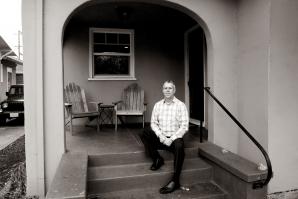Like zombies in a low-budget horror movie, commercial properties in the Capital Region are staggering along in the twilight between life and death.
Not quite dead because the lights are still on and there are at least some tenants inside paying rent. But not quite alive, because the owners have less equity in the buildings than they owe, and it may be only a matter of time before lenders foreclose.
Some people also apply the “zombie” term to properties in receivership, but that’s not quite right, says Lori Bluett, owner of Bluett & Associates Inc. and Juno Commercial Real Estate Inc. Bluett also serves as a receiver for commercial properties.
“The correct definition is a building that is performing and the
debt is current. It is not in default on its loan,” she says.
When these zombies go through their next appraisals, the lenders
will either have to reclassify them as distressed assets, ask the
owners to write big checks to keep the financing intact or take
back the properties. â?¨
Borrowers may not even realize how much trouble they are in.
There’s one good rule of thumb for identifying candidates for zombiehood: “I don’t have any numbers per se, but if it sold between 2004 and 2007 and was heavily financed, chances are better than not that they are underwater,” says Garrick Brown, vice president of research at Colliers International.
Like its horror movie counterpart, the commercial real estate zombie might show outward signs that all is not well. Owners may not have the money to pump into major tenant improvements or choose not to because they don’t know if they’ll still have the building a year from now, Bluett says. Or, given the economy, they don’t know if the new tenant will still be around next year.
Also like the movie monsters, zombie buildings can create more zombies. Every time a building goes dead and the lender liquidates it at a discount, the new price can hurt the appraised value of buildings around it, she says.
Bluett works nationally as a receiver, but her busiest market is right here in Sacramento, where she’s based.
“I have a lot less in the Bay Area than I do in Sacramento,” she says. “The reason is that Sacramento is not a tier-one market, and tier-one markets tend to be a little more stable.”
Zombie buildings can influence the dynamics of a market. First, the owners have extra incentive to keep the properties full and could be willing to make deals. They want a fat tenant list to show the lender before a loan is called, says Chris Lemmon, an office specialist for Cornish & Carey Commercial.
For owners of class A buildings, the soft real estate market can actually make that easier to pull off.
“In this current market, we are seeing a lot of tenants moving from B and C product to A product,” Lemmon says. If the rent is low enough, tenants can make the move with no net increase in expense.
Ethan Conrad, owner of Ethan Conrad Properties, says he’s lost deals to landlords who were desperate to fill buildings. Tenants may find the benefits short-lived, however.
“Based on my knowledge, if I were a tenant or a broker representing a tenant, I would be very concerned about the financial strength of my landlord, where the landlord is required to do a lot,” Conrad says. “It doesn’t take a brain surgeon to figure out if the landlord doesn’t have enough money to pay the mortgage, he probably doesn’t have enough to maintain the property.”
Some landlords are savvy about how they structure deals, such as keeping the base rent at the market rate, but offering a few months of free rent to close a deal.
“Why would you want to modify a 10-year lease to a low amount if a couple of years from now the building is full?” Conrad says.
And the initial savings may not survive a foreclosure. Lenders and new owners aren’t known for kicking out paying tenants, but they may change the terms. This past spring and summer, Conrad bought four commercial properties that had been taken back by the lenders. One property had a pair of tenants who signed below-market leases with the old owner. The bank terminated them, and Conrad negotiated new leases at market rates.
That kind of scenario has some tenants worried.
“Some people do care,” Lemmon says. “To them that’s a really big thing, to go to a building and know whomever they do a deal with in year one they will renew with in year five. But some tenants are just hunting for a bargain.”
The worried ones are more likely to insist on an SNDA clause, which stands for subordination, non-disturbance and attornment. The clause spells out which player’s rights are subordinate to the others, declares that the tenants won’t be disturbed by the lender if the borrower defaults, and spells out whether the lease will be turned over (attorned) intact to any new owner.
“It’s absolute common practice nowadays to have an SNDA. Tenants want to know that their rents are going to go to the right entity, and brokers want to know they are going to be paid,” Lemmon says.
It’s also up to the broker to look out for the client, says Craig Brinitzer, a Cornish & Carey senior vice president. Brokers can look up the basis that the current owners have in the property, and make sure there are no notices of default on file.
While not infallible, “Most of the experienced tenant representative brokers know how to look for telltale signs,” he says.
When these zombies go through their next appraisals, the lenders will either have to reclassify them as distressed assets, ask the owners to write big checks to keep the financing intact or take back the properties.
Where the horror-movie analogy breaks down is when a zombie building “dies,” going back to the lender. In real estate, that’s the first step to bringing a zombie back to life.
John Frisch, Cornish & Carey senior vice president, is watching it play out firsthand at the brokerage’s own office on Rocky Ridge Drive in Roseville.
“We are a tenant in a building that is controlled by a receiver,” Frisch says. It was part of the Kobra Properties portfolio. Since the start of 2009 it has been under the control of a receiver. Cornish & Carey moved in and got the listing to fill it up. Brokers managed to push the occupancy up from 40 percent to 80 percent in eight months.
Frisch says he admits to being nervous at first about maintenance and upkeep. But because the receiver doesn’t have to pay debt service, there is plenty of money to maintain the building, he says.
“I’ve been very pleasantly surprised at how well the building has been maintained. You would not know walking up to this building that there was anything amiss,” Frisch says. “That’s not how they all go. Obviously if you don’t have any tenants, you don’t have any way to pay the bills.”
All of the new tenants were able to get extensive tenant improvements, Lemmon adds. Lenders that are keen on filling buildings will make that investment. Those that just want to get rid of the property in a hurry won’t, he says.
So once again, high occupancy is key, not only in upkeep but ultimately in finding a new owner. Roseville and Rocklin have provided the biggest challenge with overall office vacancy rates of 30 percent, says Brown of Colliers. Class A space hit the 40 percent mark in the past quarter.
Those numbers don’t even include “shadow vacancy” where a tenant isn’t using all the space it is leasing. When the economy improves, such tenants won’t have to find new digs to expand.
Occupancy is so critical that Colliers has seen offering memoranda with phony expiration dates on the tenant roster, Brown says.
“I have seen it impact pricing,” Brown says. “The same building that has a tenant that will be in there for five years versus one that will be there only six months, that can account for a 20 percent price difference.”
Brown pointed to a still-new office building at 3101 Zinfandel Dr. in Rancho Cordova. “It’s a gorgeous building. Catlin Properties built it, but it was bad timing,” he says. A couple of prospective tenants dropped out, the economy hit the skids, and the building went back to the lender.
“It just goes to show you that market timing and how much financing that was involved has been the key. This thing was way overleveraged, and there wasn’t room for things to go wrong to the degree that they went,” Brown says. Even so, “If they can get some leases signed, then everyone’s health will improve there.”
A key measure in commercial real estate is the capitalization rate, the net operating income divided by the sales price, so the higher the rate the lower the price. The higher the price, the lower the capitalization rate.
The key is risk perception rather than just return on investment, Brown says. In San Francisco, an office that’s 90 percent leased might sell for a capitalization rate of six. In Sacramento, it would be a capitalization rate of eight because Sacramento has room to build a competing office when the economy recovers.
For distressed properties, the capitalization rates get even higher, and the effect is especially strong for retail properties. Rite Aid Corp. had a huge debt maturing in September. That worried a lot of people, Brown says, even though the chain announced a refinancing in June. Competing drugstore chain Walgreens didn’t have that image problem. So a property with a Rite Aid in it might go for an 11 percent capitalization rate while a comparable property with a Walgreens might go for a 7 percent capitalization rate, Brown says.
The best retail spaces are trading hands, but the distressed retail is only now starting to trickle back into the market, he says.
Brown is paying particular attention to big-box spaces. The best bet seems to be for new owners to turn properties into something else, such as the old Mervyn’s store in Rocklin revamped into a 16-screen movie theater.
Big-box properties in strong urban centers or strong standalone urban locations are moving quickly, he says, though space tends to lease for 30 or 40 percent off what the last tenant was paying. Weaker urban locations have an iffier future. The weak, rural locations will demand the most creative reuses to make them viable again, he says.
Zombies may continue to lurk in Sacramento for a couple of years to come. When the Urban Land Institute and PricewaterhouseCoopers published the Emerging Trends in Real Estate report for 2010, they said the year looked “like an unavoidable bloodbath for a multitude of ‘zombie’ borrowers, investors and lenders.” With a looming train wreck of escalating commercial mortgage–backed securities rollovers — $250 billion to $300 billion annually through 2015 — the shakeout period may extend several years, the report says. Even some conservative owners with well-underwritten loans from the early 2000s will see their equity destroyed.
The report’s localized forecast: “Sacramento sinks in lock step with the standing of state politicos.”
Recommended For You

The Accidental Landlord
More homeowners are turning to the rental market for mercy
Brian O’Hearn is an accidental landlord.
Like more and more homeowners caught in the descending mortgage spiral, O’Hearn and his wife, Juliet Williams, faced tough choices. Married in June, they owned his house in Folsom and her Sacramento condo — and both wanted to live in midtown.
Tenant Tactics
How to plan for tenant improvements
Tightening belts may be the overall theme in commercial real
estate these days, but a little planning can turn into big
savings. Business owners looking for a home and landlords seeking
tenant upgrades can trim expenses without shredding the wish
list.




Comments
Insightful